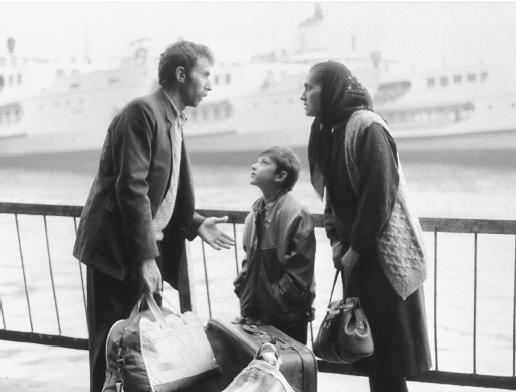Journey Of Hope - Film (Movie) Plot and Review
(Reise der Hoffnung; Umud'a yolculuk)
Switzerland/Turkey, 1990
Director: Xavier Koller
Production: Catpics AG/Condor features (Switzerland), Antea, Dewe, Cinerent, SRG, RTSI, Film Four International, and Eurimages; color; running time: 111 minutes. Released in Switzerland, August 1990, and in the United States, May 1991; distributed in the United States by Miramax Films. Languages: Turkish, Kurdish, and German.
Producer: Peter-Christian Fueter and Alfi Sinniger; screenplay: Xavier Koller, Feride Çiçekoglu; photography: Elemér Ragályi;

Cast: Necmettin Çobanoglu ( Haydar Sener ); Nur Sürer ( Meryem ); Emin Sivas ( Mehmet Ali ); Yaman Okay ( Turkmen ); Erdinc Akbas ( Adama ); Mathias Gnädinger ( Truckdriver Ramser ); Dietmar Schönherr ( Massimo ); and others.
Awards:
Bronze Leopard, Locarno International Film Festival, 1990; Academy Award
for Best Foreign Language Film, 1991.
Publications
Articles:
Cado, Valerie, review in Studio (Paris), November 1991.
Neubourg, Monique, review in Première (Paris), November 1991.
Gentele, Jeannette, "Prisbelönat flyktingdrama," in Svenska Dagbladet (Sweden), 6 March 1992.
Rosenthal, A., " Journey of Hope : Reflections of a Documentary Screenwriter," in International Documentary (Los Angeles), vol. 16, March 1997.
* * *
Journey of Hope is the European answer to Nelson Pereira dos Santos's Vidas Secas (1963) and Gregory Nava's El Norte (1983), a story of weak and helpless people hopefully struggling to secure what they believe may be a better life. Based on a real story, it was one of the first widely seen feature films to tackle the problem of migrations from the peripheries of Europe to the rich Western societies, which have not by chance been described as "Fortress Europe." The hostile and unwelcoming treatment of underprivileged newcomers has since become one of the major topics in European art and politics. Numerous cinematic works that treat these problems came into being.
A Kurdish family, pressed by economic needs, leave their native village and travel to Europe, aiming to penetrate into Switzerland and begin a new life. Leaving is particularly painful for Meryem, the wife, who has to leave behind six of her seven children. Haydar, the father, agrees that they may take along one of their boys, Mehmet Ali. The presence of the boy, however, complicates their original transfer plan, and they have to struggle to get themselves to Italy and then Switzerland as clandestines under particularly difficult conditions. They are smuggled on board a ship in a cargo container, and later on end up stranded in the hostile Alps amidst a snowstorm. The family gets separated and loses their way; Myriam is injured but eventually makes her way to safety. Heydar, however, is lost and spends the freezing night desperately wandering in the snow and looking for help. By the time he is found in the morning, his little boy is gone.
Scripted by director Koller and with impressive performances from the lead actors, the film builds on the contrasts between the self-content affluence of the West and the grim poverty of Asia Minor. It exposes exploitative individuals like the profiteers involved in human trafficking on the Swiss border, but it does not find them at fault. It rather blames the social rules designed to safeguard the rich from the poor. Most of the individual Westerners whom the clandestines encounter—an Italian sailor, a Swiss truck driver, and a Turkish émigré-interpreter—are sympathetic to them, and try to help in their limited ways. Nonetheless, the system is hostile and merciless, and there is no chance for miracles. A picture postcard from Switzerland describing the country as "paradise" figures as a recurring motif in the film; when the protagonists finally reach the deceptive "paradise" it becomes clear that for the boy it has been a journey into heaven in the literal sense.
A number of remarkable cinematic works of the past have recorded the troublesome experiences of the economic migrations of the Turks. Before Journey of Hope , the denigrating struggles of penetrating into "Fortress Europe" have been treated in films by Turkish émigré directors such as Swedish-based Tunç Okan whose film The Bus (1977) featured illegal Turkish immigrants left on their own in Stockholm, who do not dare to leave the vehicle and venture into the unknown territory of the Western metropolis. The unsettling experiences of life in a foreign land have been further problematized by German-based Tevfik Baser in his films Forty Square Meters Germany (1986) and Farewell to False Paradise (1989), both exploring the adaptation difficulties of Turkish protagonists in Germany.
—Dina Iordanova
Comment about this article, ask questions, or add new information about this topic: